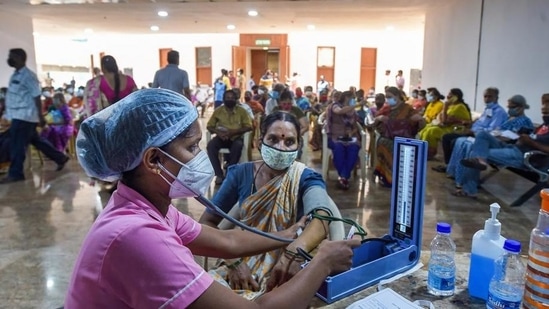Salt substitution - an effective way to reduce blood pressure in rural India
The study has been authored by Jie Yu and others.
Hypertension is a leading risk factor for cardiovascular disease (CVD) and death worldwide, afflicting low- and high-income countries alike. In India, the second most populous country in the world, the prevalence of hypertension is very high, with an estimated 207 million (25.3%) adults suffering from hypertension based on a recent nationally representative survey, and only 1 in 10 hypertensive patients achieving adequate blood pressure (BP) control. Such statistics highlight the importance of identifying and implementing novel, low-cost interventions to improve BP control in India.

Excess sodium intake is a causal risk factor for hypertension, and reducing sodium from dietary salt is advocated as a first-line treatment of hypertension by most national and international hypertension societies, including in India. Current best estimates of usual dietary salt intake suggest adults in India consume an average of ∼10 g/d of salt (4 g/d of sodium), which is twice the WHO recommended maximum. In India, the majority of dietary salt is added during food preparation or dining (discretionary salt use) particularly in rural areas where there is limited access to other sources of dietary salt such as packaged and restaurant foods. Hence, strategies that reduce sodium from discretionary salt use are promising interventions for lowering population-level sodium consumption in India.
A practical method for reducing sodium from discretionary salt use is to replace regular salt (100% sodium chloride) with a “salt substitute,” a product that replaces a portion of the sodium chloride in regular salt with other salts such as potassium chloride (usually 25–30%) and/or magnesium sulphate (10–14%). Meta-analyses of randomised controlled trials (RCTs) have found that compared with regular salt, use of a salt substitute significantly reduces systolic blood pressure ([SBP] –7.8 mmHg, 95% CI: –9.5, –6.2 mmHg) and diastolic blood pressure ([DBP] –4.0 mmHg, 95% CI: –5.2, –2.7 mmHg) in hypertensive patients, without serious adverse side-effects. However, it is not yet clear if salt substitutes could similarly reduce BP among Indian hypertensive patients, since none of the RCTs were conducted in Indian populations.
The efficacy of salt substitutes on BP may not be entirely generalisable since uptake will depend on behaviors relating to salt use as well as the acceptability of the taste, with some reports suggesting individuals may prefer the taste of regular salt over salt substitutes. Thus, we designed and conducted the Salt Substitute in India Study (SSiIS) to examine the acceptability, usage, and BP effects of a reduced-sodium and added-potassium salt substitute among rural Indian individuals with a self-reported history of hypertension diagnosis.
The study can be accessed by clicking here
(The study has been authored by Jie Yu and others)



